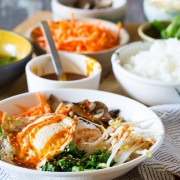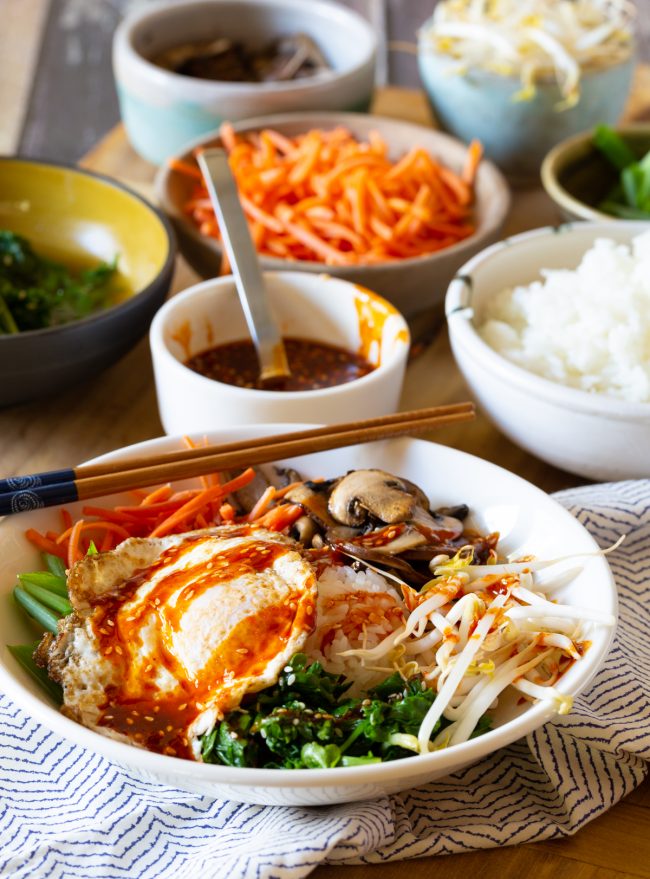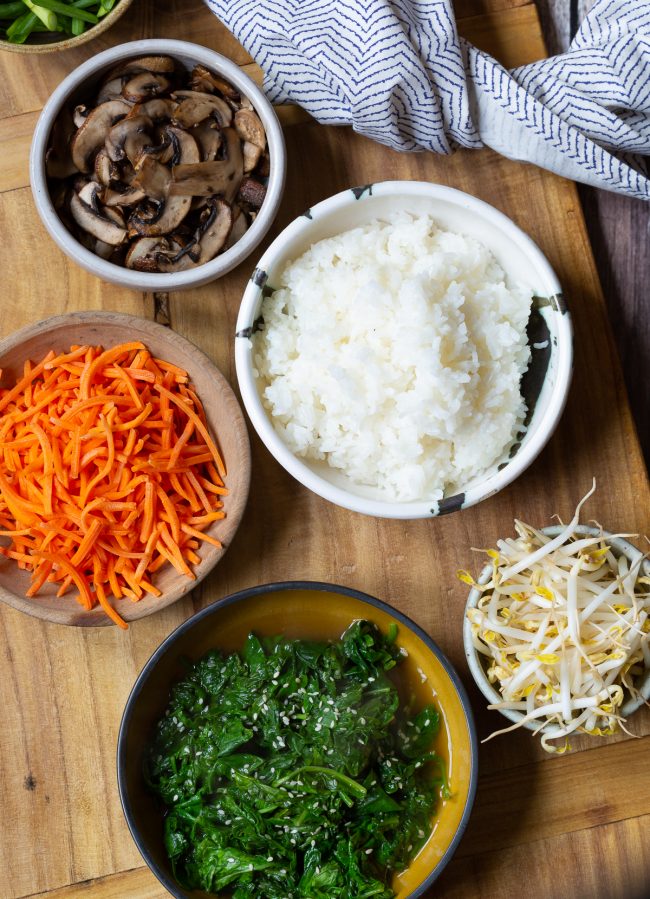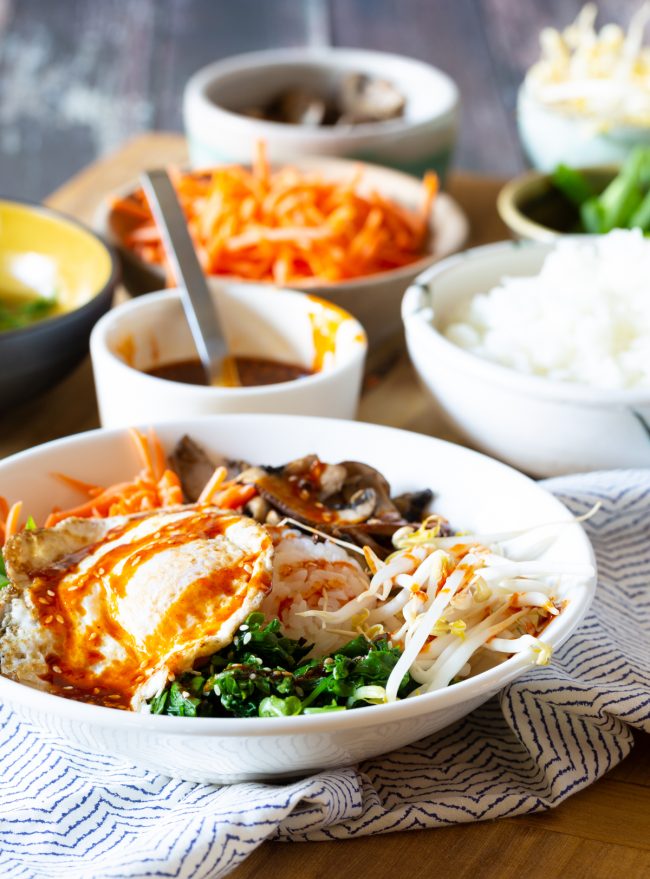What is Korean Bibimbap?
Don’t you just adore one-dish comfort foods? After a long day there’s nothing quite as wonderful as curling up with a big, warm bowl of deep savory flavors and satisfying textures. Today I’m sharing a healthy and satisfying favorite, Korean Bibimbap. This Korean specialty is an all-in-one meal that includes rice, raw veggies, sautéed veggies, a fried egg, and a sweet and spicy homemade Gochujang sauce over the top. Serve with kimchi on the side for even more tanginess!
What Ingredients You Need To Make Bibimbap
The key to making a great Korean Bibimbap bowl is to focus on fresh ingredients, perfectly runny eggs, and the homemade Gochujang sauce. The vegetables can be adjusted to your liking, and this vegetarian dish can definitely be beefed up by adding Korean Bulgogi to each bowl. Here’s what you need to make Korean Bibimbap:
Cooked sticky rice – make fresh or use leftoversVeggies – loose leaf spinach (or kale), mushrooms, carrots, bean sprouts, and green onions… or whatever vegetables you prefer! Garlic – mincedSesame oil – for cookingVegetable broth – helps to infuse great flavor into the leafy greensSesame seeds – for lovely textureEggs – fried easy to create a beautiful soft yolkBeef Bulgogi – or other cooked protein
Gochujang paste can be purchased at Asian markets, as well as stores like Whole Foods. However, for this recipe we’ve elevated the store-bought Gochujang by adding:
Sesame oilHoneyRice vinegarSesame seeds
This bright sticky-sweet sauce adds a bold punch of flavor to every bite of your Korean Bibimbap.
How to Make Easy Korean Bibimbap
To serve, simply pile all of your prepared ingredients into one beautiful bowl. Start by placing warm rice at the bottom of the dish, layer fresh shredded carrots and bean sprouts with the cooked mushrooms and spinach, and top with beef bulgogi and fried eggs. Allow each person to finish with a drizzle of the homemade Gochujang sauce and serve with kimchi on the side.
Get the Full (Printable) Korean Bibimbap Recipe Below. Enjoy!
Can You Meal Prep Bibimbap?
You can prepare and refrigerate all of the individual ingredients a day or so before serving… Except for the fried eggs. Then simply reheat all of the components and fry eggs when ready to enjoy.
What Are Some Different Proteins I Can Use?
While I love classic bibimbap with Korean Bulgogi Beef, you can definitely swap out different proteins. Try adding cooked pork or chicken if you like! Keep this a vegetarian dish by using cooked extra firm tofu; or skip extra protein all together and just top with fried eggs for an even easier meal. Whether you serve Korean Bibimbap vegetarian style, or with beef, you are sure to love the robust flavors and healthy crunch in every bite!
How long do leftovers last in the fridge?
These leftovers will be fine in the fridge for 3 to 5 days as long as they are stored in an airtight container.
Can I freeze homemade bibimbap?
This recipe tastes the best when it is fresh, which makes this recipe unsuitable to be stored in the freezer.
Looking for more Asian-Inspired dishes?
Vietnamese Bun Chu Gio RecipeKorean Beef Bulgogi RecipeThai Nam Sod Salad RecipeChinese Pot Stickers RecipeClassic Thai Fried Rice RecpeThai Chicken Satay ReipeVietnamese Banh Mi Sandwich RecipeKorean Pajeon Veggie Pancakes RecipeThai Pad Ke Mao (Drunken Noodles) RecipeChinese Hot Pots Recipe
Share This Recipe With Friends!






